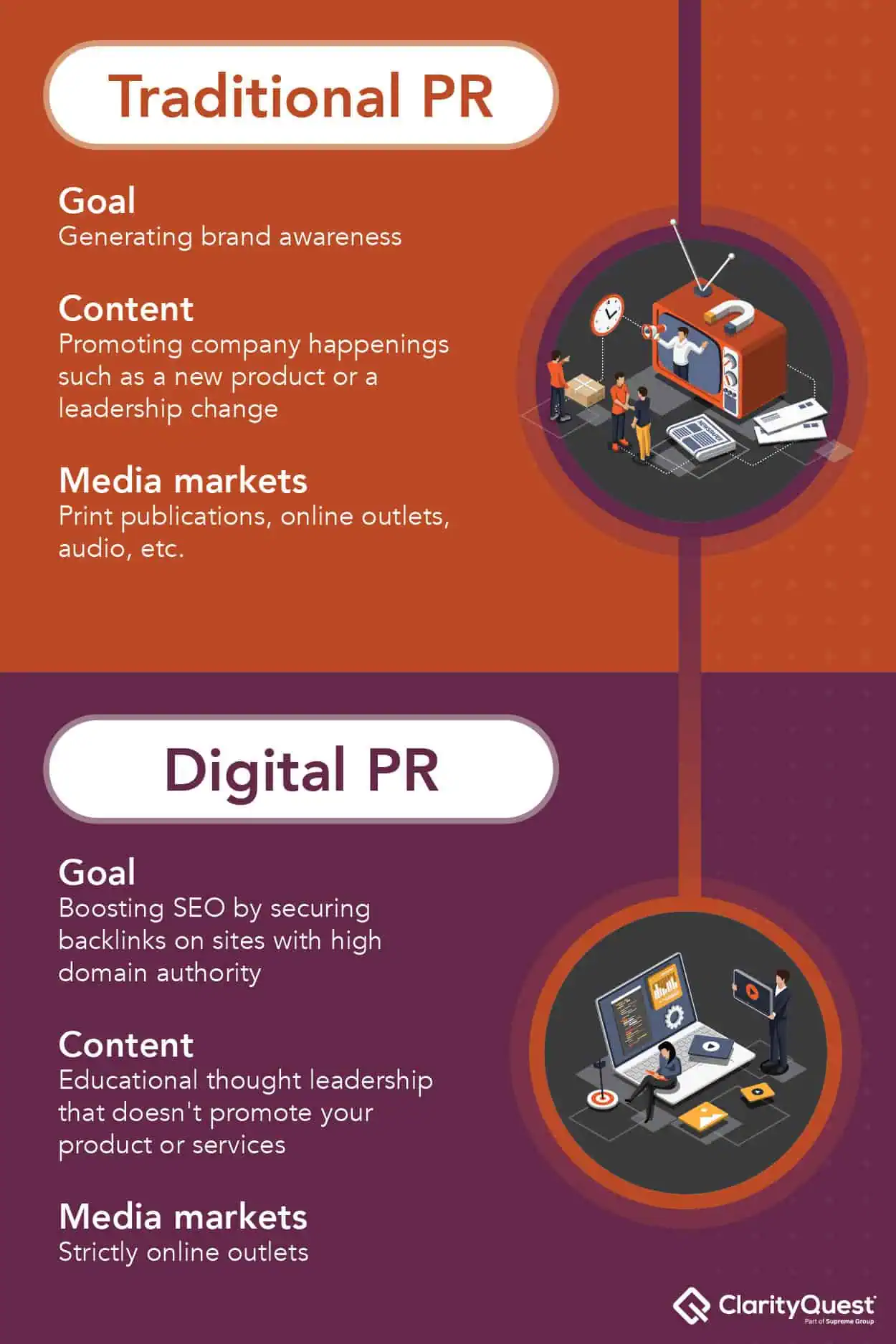When people think about their search engine optimization (SEO) strategies, public relations (PR) often isn’t the first thing that comes to mind.
However, using digital PR for SEO (compared to its more traditional counterpart) can be an incredibly effective tactic to bolster your efforts.
Traditional PR vs. Digital PR
While both are important to a well-rounded PR strategy, there are key differences between traditional PR and digital PR.
The two approaches vary in content type, audience, and pitching strategy.
Traditional PR
A significant difference between the two is that traditional PR is typically geared toward brand awareness and does not necessarily impact SEO.
Traditional PR is great for promoting things directly related to your company, such as a new product or service, an event or a leadership change. When creating a buzz about these company happenings, it’s essential to identify media markets that closely align with whatever you’re promoting, as an audience even a few degrees away may not care about something directly related to a company.
These media markets may include online outlets but may also focus on print, in-person events, audio, etc.
Digital PR
The goal of its digital counterpart is to use PR for SEO. How? By securing backlinks on reputable sites with high domain authority. When you attain a backlink on a site Google deems reputable, it believes you are, too.
The approach to securing these backlinks is quite different from traditional PR and often allows you to be more creative. The content you pitch is entirely different and solely focuses on thought leadership—not your company or its products.
The idea is to provide an online outlet with a resource or piece of information they want to share with their audience. In return, they’ll give you credit by linking to your website, thus boosting your SEO.
What content works for digital PR for SEO?
Remember: The content that works for digital PR must benefit your audience more than your company. It should be educational and devoid of anything salesy. You want the media outlet to think, “Wow, this would be a great resource to share with our audience.”
The type of content can vary widely. It could be something as short as a quote from a leader from your company on a question or recent event. Or, it could be something as long as a 2,500-word deep-dive article on a specific topic.
The content can also be either timely or evergreen, it really depends on the outlet and your goals. However, it is important to note that timely content often requires a quick turnaround to remain relevant, underscoring the importance of staying on top of current (and future) events.
Whatever you pitch, again, the main goal is securing that precious backlink on high-authority sites! While some may disagree, Google prefers quality over quantity.
A holistic approach to PR and SEO
Remember that maintaining a mix of traditional and digital PR efforts is crucial to creating a successful public relations strategy. Additionally, securing backlinks (while very important) is just one component of a holistic SEO strategy.
Finding a healthcare tech marketing agency that specializes in both can make a huge difference in building your B2B marketing strategy.
Looking to learn more about SEO and PR? Add these articles to your reading list:
- What are long-tail key phrases and why do they matter for SEO?
- How to write website copy for SEO
- You’re in The New York Times, now what?
- Public relations + paid media integration guide
Note: The topic for this blog was inspired by Agital’s recent webinar, Boosting SEO With Digital PR: 4 Killer Strategies (backlink secured!).



